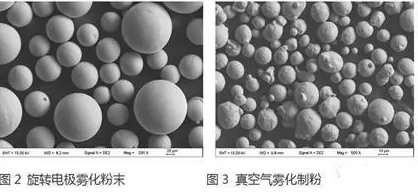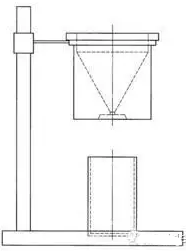

In the above
2. Particle size distribution:
The statistical data of the volume percentage of metal powder particles of different sizes in a certain size interval. Generally, the particle size distribution of the prepared powder is normal.
Taking the above figure as an example, in the results of the particle size distribution of metal powder particles, d(10)=20.38μm, which means that the proportion of powder with a size smaller than 20.38μm is not less than 10%. In the same way, d(50)=30.44μm, d(90)=42.09μm, which means that in this powder, the proportion of powder smaller than 42.09μm is not less than 50%, and the proportion of powder smaller than 42.09μm is not less than 90%. .
GBT 1480-2012 "Metal powder dry sieving method to determine particle size" is suitable for powder particles larger than 45 microns, which can not meet the requirements of metal powder particle size testing. At present, most particle size analysis is performed by laser particle size analyzers (applicable to 0.1 microns to 2 Millimeter particle size distribution) analysis, there are Malvern laser particle size analyzer, Baxter laser particle size analyzer, Horifield laser particle size analyzer, etc., before testing, it is necessary to verify the applicability with a standard sample of similar particle size. At present, the particle size range of powders commonly used in metal 3D printing is 15~53μm (fine powder), 53~105μm (coarse powder), and in some cases, it can be widened to 105~150μm (coarse powder). The corresponding particle size ranges are: 270~800 mesh (fine powder), 140~270 mesh (coarse powder), 100~270 mesh (coarse powder). This particle size range is divided according to metal printers with different energy sources. Printers with lasers as energy sources have a fine focus spot and are easier to melt fine powder. It is suitable to use 15~53μm powder as consumables. The powder supply method is layer by layer. Spreading powder; the printer with plasma beam as the energy source has a coarse focus spot, which is more suitable for melting coarse powder. It is suitable to use 53~105μm powder as a consumable, and the powder supply method is coaxial delivery. powder.
3. Reference indicators such as sphericity, loose density, fluidity, etc.

Sphericity is the degree to which the metal powder particles are close to the sphere. It is generally qualitatively analyzed by scanning electron microscope (SEM), and it is also defined as the ratio of the area of the spherical powder to the total area in a certain area. The above picture shows the SEM morphology photos of different metal powders. It can be seen that the sphericity of the powder particles on the left is better than that of the powder on the right. Generally speaking, the sphericity is good, and the fluidity of the powder particles is also good. It is easier to control the spreading and feeding of powder during metal 3D printing, and it is easier to obtain higher-quality parts. Generally speaking, the sphericity of the powder prepared by the plasma rotating electrode atomization technology is better than that of the powder prepared by the vacuum atomization technology, but has its own advantages in the comprehensive performance of the alloy powder.

Figure 4 Hall flow meter device
Fluidity refers to the time required for a certain amount of metal powder particles to flow through a measuring tool with a specified aperture. The test method refers to GB/T 1482-2010 or ISO 4490:2001 "Metal powder fluidity determination standard funnel method (Hall flow meter) )", the unit usually used is s/50g, which can be measured by a Hall flow meter. The smaller the value, the better the fluidity of the powder. Fluidity can also be characterized by the angle of repose. The angle of repose refers to the maximum angle measured in a gravitational field when the gravity and the friction between the particles are balanced when the particles slide on the free slope of the metal powder accumulation layer. . This is a simple method to test the fluidity of metal powder. The smaller the angle of repose, the smaller the friction and the better the fluidity, which is more conducive to powder spreading and powder feeding.
The bulk density is the mass of the metal powder in a certain volume, which can be measured by the funnel method. Refer to GB/T 1479-2011 "Determination of the bulk density of metal powder". The loose packing density is only used as a reference index to characterize the degree of compaction of the powder during the replenishment process, and its influence on the density of the metal printed final product is still uncertain.
The full text after...
Hot information

